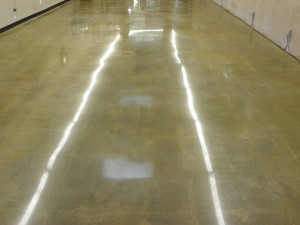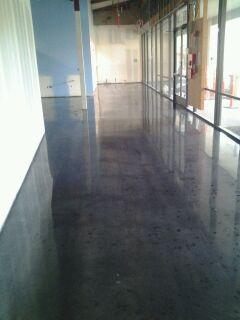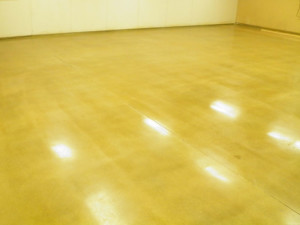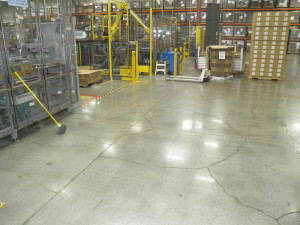
Benefits of Polishing
Slip Resistance
- Measurement of coefficient of friction and slip resistance
- Exceeds OSHA standards for floors
- Exceeds ADA (Americans with Disabilities Act)
- Higher degree of polish is not directly related to slip resistance
Stain Resistance
- Reduces the porosity of the floor in conjunction with densifier
- Densification process is a chemical reaction, stain resistance not immediate
- Slows down penetration of water, oil, and other contaminants
Restoration of Older Floors
- Rain damage, spalling, pitting, delamination, floor failures
- Removal of top surface and harden the concrete below
- Deteriorated concrete can be strengthened
- Impacted and abrasion resistance of the concrete can be increased

Better Lighting
- Reflectivity of the floor
- Can reduce lighting costs
Slip Resistance
- Measurement of coefficient of friction and slip resistance
- Exceeds OSHA standards for floors
- Exceeds ADA (Americans with Disabilities Act)
- Higher degree of polish is not directly related to slip resistance
Less Maintenance
- Reduced penetration of contaminants, remain on surface
- Tire marking significantly reduced
- No sealing, waxing or stripping of floor required
- No aggressive scrubbing required

Reduced Tire Wear
- Smoother concrete surface can significantly reduce tire wear
Timing of Installation
- Applied after 28 days-no extended time frames between finishing and applying as with specialty coatings
- Non-toxic-can be applied while building is still occupied
- Densifier used in process-approvals through CFIA for use in food handling facilities
Cost Effective
- Relativity inexpensive application costs
- Low maintenance costs
- One time application-no replacement costs as with specialty flooring systems

Types of Finishes
- 800 Grit: Satin finish that will reflect images from side lighting
- 1500 Grit: Semi-gloss finish that will reflect overhead and side images from 35-45 feet with increased light reflectivity
- 3000 Grit: High-gloss finish that will look wet and show mirror like reflections of side and overhead images
Where can it be used?
- Manufacturing
- Commercial
- Warehouses
- Sports Arenas
- Airport Facilities
- Institutional Facilities
- Residential
- Convention Centers
- Airplane Hangers






